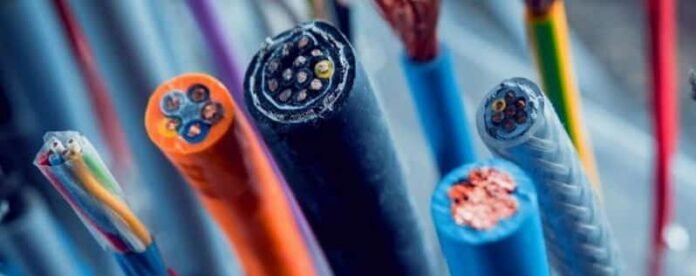 There is no simple definition of network cabling, yet there are some essentials that most people know. Cabling refers to the arrangement of wires and connectors that allows data and communication to travel through it easily. It is also used to connect devices together for purposes of high-speed data transmission over long distances.
There is no simple definition of network cabling, yet there are some essentials that most people know. Cabling refers to the arrangement of wires and connectors that allows data and communication to travel through it easily. It is also used to connect devices together for purposes of high-speed data transmission over long distances.
Network Cabling companies provides different types of cabling services to transfer data between the computers, switches, and routers. The types of cabling services includes Unshielded Twisted Pair (UTP) Cable, Shielded Twisted Pair (STP) Cable, Coaxial Cable, and Fiber Optic Cable and Wireless LAN. All of these are used today in almost every private and commercial set up, from offices to corporate network and even the Internet.
Different types of Network Cabling
Unshielded Twisted Pair (UTP) Cable:
Unshielded Twisted Pair (UTP) Cable is made of multiple copper wires. In some cases, a single twisted pair wire is used to support the data cable, while the other ends of the cable are connected to the computer’s motherboard or an external storage device such as a hard drive. This type of cabling is often called WOW-based or WAN-based, since WOW stands for Wireless Internet Connections and WWP for WAN-based Internet connections. In most cases, this kind of cabling is used to support a personal computer, laptop, or tablet computer.
Shielded Twisted Pair (STP) Cable:
Another kind of cable that’s used widely is the shielded twisted pair cable. As the name implies, this particular cable has been made from two different kinds of metals. A layer of one metal and a layer of another is used to form the shield around the conductors in the cable. Usually, the outer layer is made out of copper while the middle layer is made of lead. This ensures that the signals aren’t disrupted when these cables are being used for industrial purposes.
Coaxial Cable:
coaxial cable has been around for decades, used in everything from radio and television broadcasts to telephone and personal telephones. Today coaxial wire and optical fiber optic cable are still being used in many applications, although they have been replaced largely by fiber optic cable in recent years due to its much higher bandwidths and ease-of-use. A standard Ethernet cable can carry data at a rate of 10 gigabits per second (Gbps), which is very fast considering the fact that telephone and cable lines can only support a rate of about 5 Gbps.
Fiber Optic Cable:
The fiber optic cable has an outer sheath made of glass or plastic. This is then wrapped around the conductors inside the cable. When used in a computer network, the fiber optic cable transmits signals very fast. These cables are usually fastened with clips or clamps.
Wireless LAN:
You might be wondering what is wireless LAN and the answer to that question is fairly simple because it depends on what you are trying to set up. If you want to set up a wireless network in your home, you will need some sort of router and network cabling to get the signal from the router and then install your computer into the router. Then you would connect your laptop to the computer with the wireless card or Wi-Fi card and then you would get Internet from that computer. Most routers have built in security so if you have a laptop with you to turn it off, the wireless network will not be affected.
Uses of Network Cabling:
Types of cabling typically used in information technology departments include data cabling, network cabling, managed dedicated lines, and wireless LAN cabling. Data cabling is used for both local and remote computers, including laptops, desktop computers, netbooks, and other devices. This cabling enables fast, reliable transfer of large amounts of data, regardless of the distances between devices. For instance, if an employee wants to transfer huge photos from one computer to another over a LAN, he will use data cabling.
Network cabling is also used in the workplace, especially for offices that need to connect with networked computers. Wide Area Networks (WANs) is used in businesses that have employees that are spread around the globe. The Internet is the backbone of such networks, which are run by high-speed Internet connections. In a typical workplace, each computer connected to the internet through a local network uses a specific set of wires.
Wireless LAN cabling is a newer form, which enables computer devices to connect to the network without using traditional copper wiring. This newer technology is a great alternative to copper wiring because it offers a higher speed Internet connection. To use the technology, the computers must be within range of the wireless router, which operates as the router between the network and the computers. Because of this feature, wireless LAN cabling is often used to provide high-speed Internet services to businesses.
When it comes to wired Ethernet cabling, there are two forms: structured cabling and modular cabling. Structured cabling is used to create logically separate connections between devices. Modular cabling is similar to traditional cabling, but it is assembled to create a more compact design. The wires used in modular cabling are pre-strung, which allows the cables to be put together quickly and easily.
As you can see, the definition of this cabling is an important thing to consider when purchasing network equipment. Always make sure that your cabling provides the definition that you need. You should never purchase equipment based on the definition that others have provided. Your network should work smoothly for years to come. If you do not properly set up your cabling, you will likely need to replace the older, less efficient cabling in the future.



